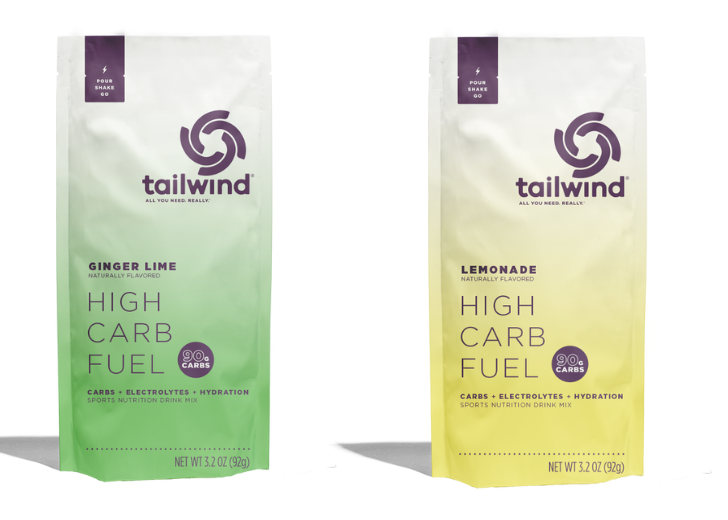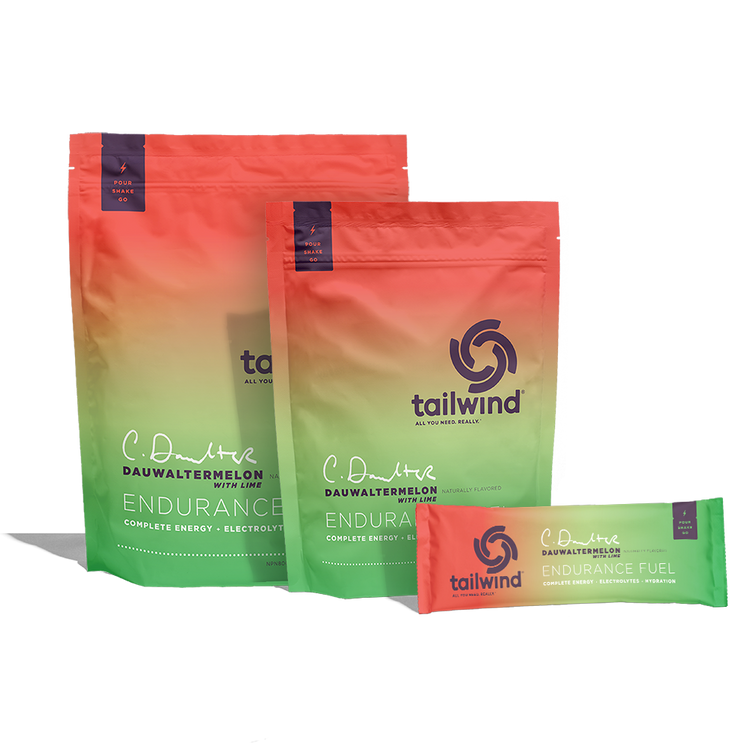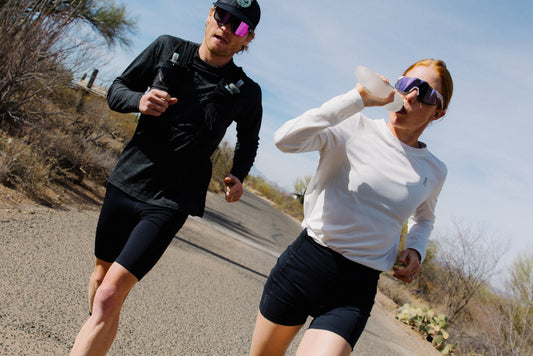Your marathon PR starts on your plate
0 Comments
Key Takeaways
-
Many runners underfuel during marathon training, especially on high-mileage days. Consistent energy intake is essential for performance, recovery, and long-term health.
-
Kylee Van Horn, RD, recommends a simple “rule of thirds” approach to meet daily macros and scale intake on heavier training days.
-
Smart, convenient fueling habits like mid-run carbs, fast recovery nutrition, and energy-dense snacks help keep athletes prepared through busy schedules and cooling fall temps.
Big training requires big fueling. Sports RD and co-host of the Your Diet Sucks podcast Kylee Van Horn shared with us some small tweaks that can lead to big performance payoffs.
Fall racing season is here, and many athletes are in the middle of a marathon buildup. But does your nutrition really need to change just because the calendar flips? According to sports dietitian Kylee Van Horn (host of Your Diet Sucks and founder/owner of FlyNutrition) solid fueling principles hold true, but your execution may need fine-tuning for cooler temperatures, shifting mileage, and busy life rhythms.
The most common mistake Kylee sees among her athletes is undershooting their nutritional needs on big mileage days. Over time, this can negatively impact performance, or worse, lead to injury, hormonal imbalance and burnout.
It’s not rocket science (but it is nutritional science): As volume ramps up, so do calorie and macronutrient demands, regardless of the season. But how do you meet your nutrition needs in the context of a full life? Over her career as an athlete, coach and dietician, Kylee’s honed some tried and true, straightforward tools for figuring out your fuel and getting the most out of your marathon training.
Day-to-day fueling: The rule of thirds
Kylee often encourages runners to mentally divide the day into three eating windows: morning, midday, and evening. Let’s walk through this using a 150 pound (~68 kg) runner on a light day of training as our example:
-
Protein: On a lighter day, she might aim for 100 grams total — roughly 33 grams per window. A deck-of-cards portion of chicken, or two decks of tofu, roughly hits 25 grams, so adding a little dairy, egg, or beans fills the gap.
-
Carbs: Think cups. One cup of cooked grain or pasta is about 45 grams. For a light day, this athlete should shoot for around 180 grams ofl carbs total — about four 1-cup servings spread across meals and snacks.
-
Fats: Kylee suggests around 60 grams total (20 grams per window). Think one avocado or two tablespoons of olive oil, nuts, or nut butter.
Here’s a sample menu for our runner on a light training day to give you an idea of what this might look like practically:
-
Breakfast: Oatmeal + banana + Greek yogurt (~45 grams carbs, 15 grams protein, 8 grams fat)
-
Lunch: Rice bowl with chicken, beans, veggies, drizzle of olive oil (~60 grams carbs, 30 grams protein, 12 grams fat)
-
Dinner: Pasta + lean meat + side salad with vinaigrette (60 grams carbs, 25 grams protein, 10 grams fat)
-
Snacks (throughout): Think high density, like bananas and nut butter packets, dried fruit, Tailwind Recovery or crackers and cheese.
On harder or longer days, simply scale portions upward and add mid-run fueling and recovery support.
Feeling extra hungry on your days off? Kylee says that could be a warning sign that you’re not getting enough nutrition on bigger training days and your body is trying to “catch up.” Over time, this leads to sluggish performance, fatigue or injury.
Your body is going to perform better when it has what it needs, when it needs it, which is why it’s important to try and hit your macros in each window, every day.
Pre-, during-, and post-fun Fueling
For your long run or race day with the same 150 pound athlete, Kylee offers these general rules:
-
Before: 1–2 grams of carbs per kilogram body weight. A good example: bagel with jam + banana + a scoop of Tailwind Endurance Fuel in water.
-
During: Aim for 60–90 grams of carbs per hour from easily digestible sources (your Endurance Fuel mix, Tailwind High Carb Fuel, gels or chews). Include ~600–800 mg sodium per liter and roughly 0.5 liters/hour fluid (adjust to conditions).
-
After: Within about 30 minutes, prioritize ~20 grams high-quality protein plus 1–2 grams of carbs per kilogram body weight. For our 150 pound runner, that’s ~68–136 grams of carbs. Tailwind Recovery Mix is a great start. Kylee likes combining it with a banana or blending with peanut butter when she needs an extra boost.
Friendly PSA: Your stomach hates surprises. Always test race-day fueling strategies during training to avoid GI upset.
Real-life tips for busy runners
Good nutrition often has to contend with a week of meetings, errands, parenting, early darkness and training itself. Kylee encourages strategies like:
-
Stock your freezer and pantry with convenient staples (frozen veggies, grains, beans, protein sources, etc.).
-
Do a monthly pantry stock where you load up on shelf-stable food items so even on the weeks you don’t make it to the store, you’ve got some nutrient-dense options at home.
-
Convenience is key. If time is too scarce to meal plan and grocery shop, there’s no shame in a meal delivery service. Let the food come to you.
-
Keep your car, gym bag, or workspace stocked with energy-dense snacks (think dried fruit, nut-butter packets, Tailwind Recovery Mix, etc.). Kylee also cautioned against relying on low-density or low-calorie snacks like plain rice cakes or popcorn for endurance fueling—these foods just don’t pack the nutrient punch you need to perform.
Fueling through fall marathon training doesn’t require a full diet overhaul but it does demand awareness, strategic scaling, and consistency. Tailwind’s fueling systems are a piece of the puzzle, but they won’t cover all of your nutritional needs outside of training. Our big takeaway: Match your energy needs to your miles, so you can trust your body and run confidently all season, every season.






